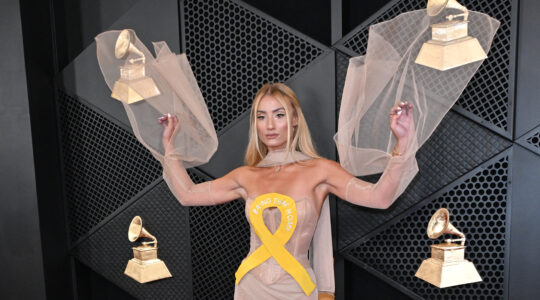LOS ANGELES, June 1 (JTA) — A Holocaust museum here is fighting for its survival. The Los Angeles Museum of the Holocaust, dubbed “The Wandering Jew” of the Jewish community by one survivor, has lost one rented home and found interim shelter in another, but a permanent home of its own yet remains beyond its reach. The museum is led by a physician who insists that the institution fulfills a need in Los Angeles and in Holocaust education. But the museum faces tough odds. It is not far from another Holocaust museum of sorts, the high-profile Simon Wiesenthal Center-Museum of Tolerance; it is losing financial backing from the local Jewish federation, and it is experiencing declining involvement by the Holocaust survivors who founded it. There are some hopeful signs. The museum’s executive director, Rachel Jagoda, recently received a $100,000 check from the Annenberg Foundation and smaller sums from three other foundations and a German bank. Best of all, a Holocaust survivor who asked to remain anonymous made a $3 million pledge as the building block for a permanent museum. It is the dream of Jagoda and the museum’s chairman, Dr. Gary Schiller, that the structure might rise on city-owned land in Pan Pacific Park, next to the Los Angeles Holocaust Monument. Early this year, the Los Angeles Museum of the Holocaust’s landlord announced that he was converting the museum building to condos, and he evicted the tenants. Left homeless, the museum was forced to close its doors on March 1 and to put its exhibits into storage. After much frantic scrambling, the museum signed a lease to take over the street floor of the ORT Building next to the federation headquarters. The redesigned museum is expected to open there this summer. Over the past few years, as annual federation support for the museum dropped from $189,000 to $120,000 to the current $60,000, the federation’s relationship with the museum soured. Now, facing annual expenses of $400,000 for operations, rent and a three-person staff, the museum leadership has its work cut out for it. Schiller pins some of his hopes on the Hollywood community, with whom he is planning a major fund-raiser. But the museum’s support from survivors, its original base, continues to decline. Except for the $3 million pledge, “they haven’t stepped up to the plate,” Jagoda said. A more fundamental question is whether support for the Holocaust museum is money well spent at a time when giving to Jewish communal institutions in Los Angeles is flat and charitable demands in Israel and at home are rising. Schiller says it is. The 40-year old hematologist and oncologist at the UCLA Medical Center, and a noted researcher in leukemia and bone marrow transplants, draws on his own practice for an analogy. “I am frequently asked why we should spend money to save the life of a 60-year old cancer patient when there are millions of kids who haven’t been vaccinated,” he said. “I answer that it’s not one or the other. We have the financial resources to do both.” Nor does Schiller believe that the Wiesenthal Center obviates the need for a community Holocaust museum. “The Wiesenthal Center and its Museum of Tolerance are nonsectarian and deal with universal discrimination and genocides,” he said. “We are focused purely on the Holocaust, we have strong relationships with schools and colleges, and we reach out to parts of Los Angeles nobody else reaches.” The museum had its beginning in 1961, when a group of survivors donated artifacts from their concentration camp experiences and founded what was then known as the Los Angeles Martyrs Memorial and Museum of the Holocaust. First housed in the Jewish federation building, the museum gradually grew and eventually moved out in the late 1990s after an earthquake damaged the federation building. Having moved to Museum Row on Los Angeles’ Wilshire Boulevard, the museum staged a number of well-received displays, most recently an exhibit on the Nazi persecution of homosexuals, which attracted 5,000 visitors.

Help ensure Jewish news remains accessible to all. Your donation to the Jewish Telegraphic Agency powers the trusted journalism that has connected Jewish communities worldwide for more than 100 years. With your help, JTA can continue to deliver vital news and insights. Donate today.





